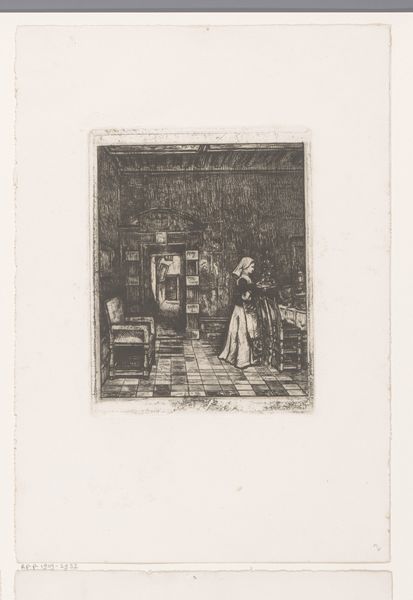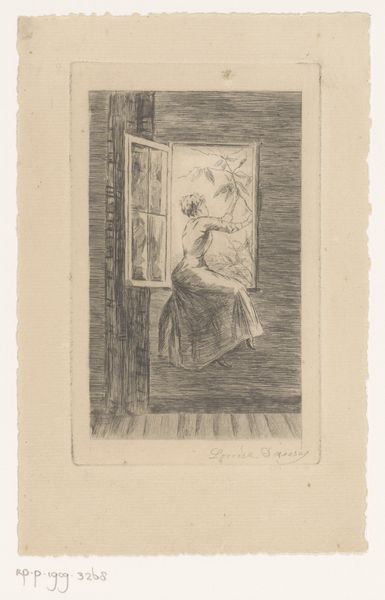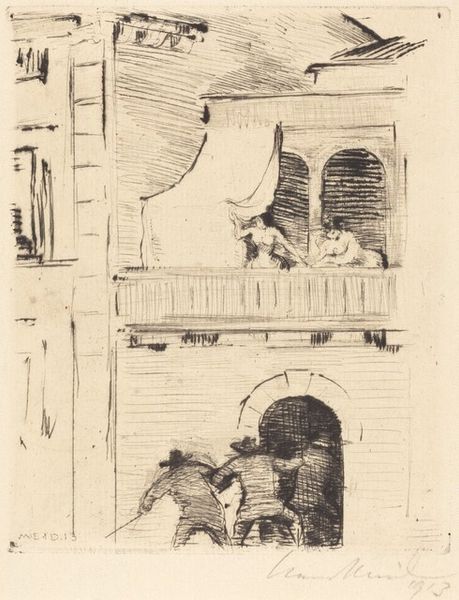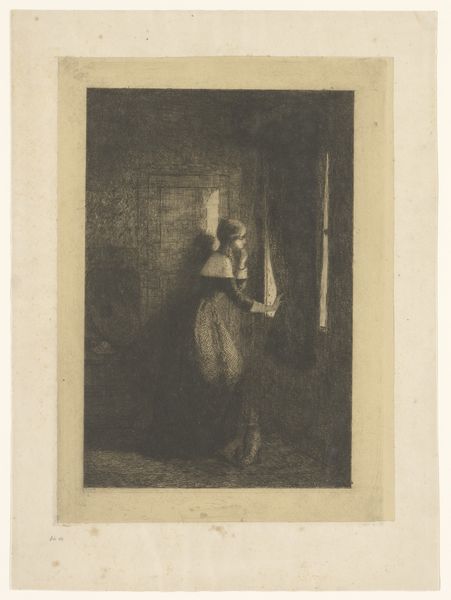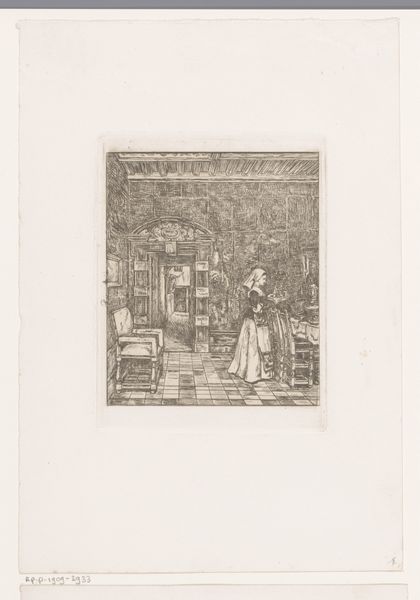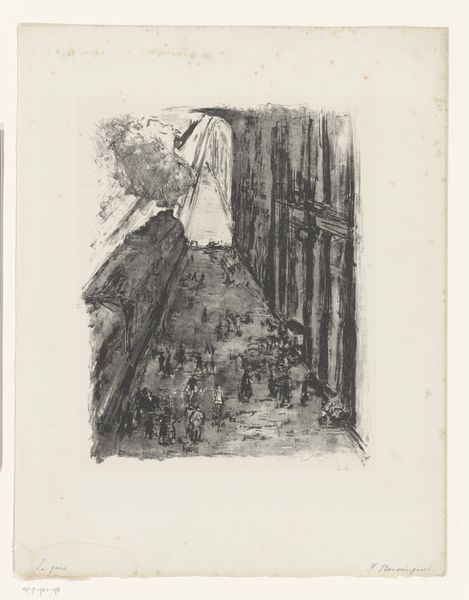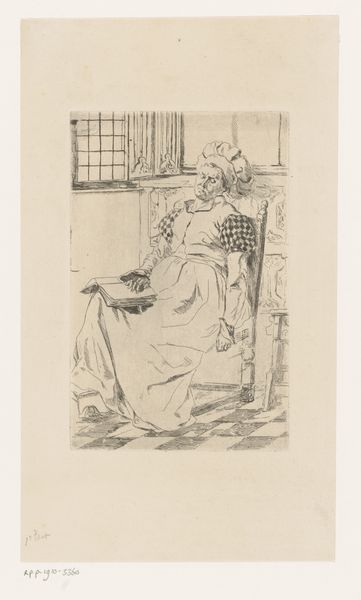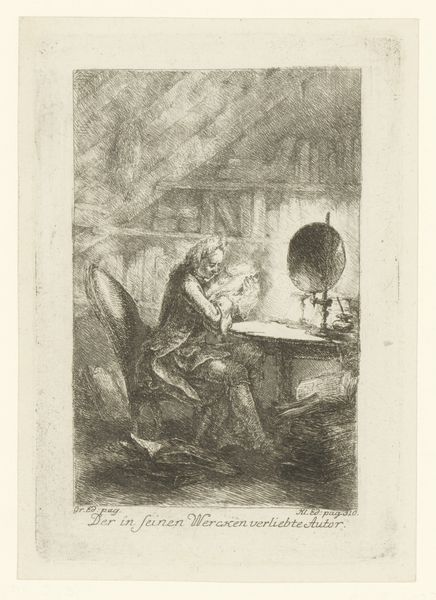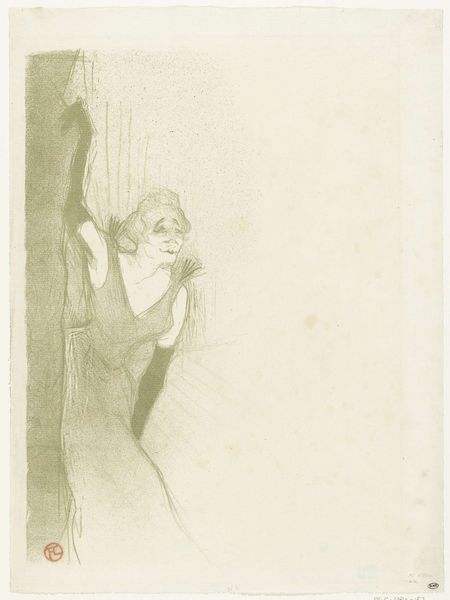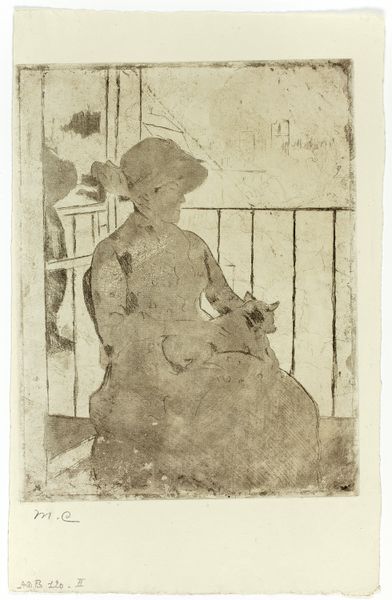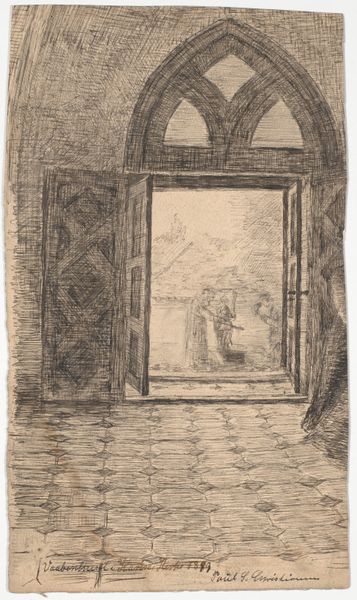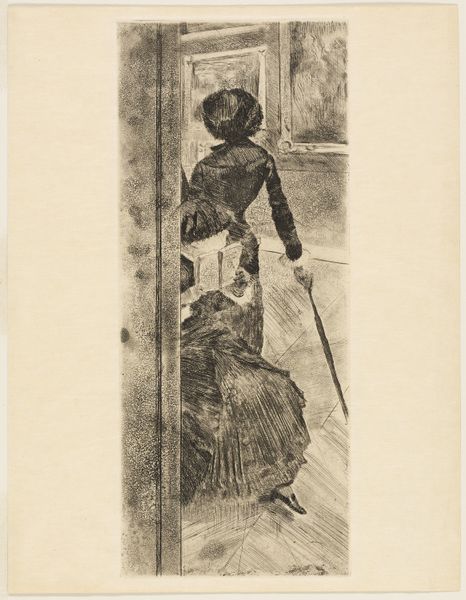
drawing, print, etching, paper
#
portrait
#
drawing
# print
#
etching
#
paper
Dimensions: 201 × 132 mm (image/plate); 210 × 132 mm (sheet, with signature tab)
Copyright: Public Domain
Curator: Here we have Theodore Roussel’s "The Window Cleaner," an etching on paper from 1889. The piece resides here at the Art Institute of Chicago. What are your initial thoughts? Editor: It strikes me as oddly intimate, observing this figure perched in a window, seemingly absorbed in a mundane task, yet the scene feels deliberately composed. The muted tones create a sense of quiet introspection, doesn’t it? Curator: The medium definitely informs that. Roussel's printmaking—particularly his experimentation with etching—allowed for very fine lines and subtle tonal variations. How do you see the materiality of print influencing the content here? Editor: Well, thinking about the labor involved in printmaking, we can connect that directly to the work being performed in the image. There’s this parallel between Roussel meticulously crafting the image and the unseen woman diligently cleaning the window. Whose labor is truly seen here, and what are we being asked to observe about it? Also, considering the prevalence of women in domestic service at this time, there is a lot to unpack. Curator: Absolutely, there's a connection between process, subject matter, and the socioeconomic context. Roussel clearly was part of a turn toward valuing scenes of everyday life, not grand narratives. He also used specialized tools in pursuit of a surface, almost textured with feeling, am I right? Editor: Yes. And I read that deliberate ambiguity with respect to gender and class dynamics into that visual texture and surface itself. The woman’s facelessness can either de-personalize the subject in favor of elevating form and aesthetic, or, the omission itself represents that devaluing of labor in late 19th century culture. The latter interpretation challenges our traditional understanding of beauty as separate from a critique of social conditions. Curator: So, where do we see this image fitting into Roussel's broader artistic practice? Does this emphasis on the laboring figure typify him, or is it a bit of an outlier in what he chooses to portray? Editor: I think it is part of a clear pattern to reveal certain aspects of life that were obscured by the dominant artistic narratives of his time, those being predominantly driven by wealth and a very myopic vision of culture at the time. In that sense, this quiet domestic scene can act almost like a revolutionary gesture. Curator: Fascinating! I leave appreciating how Roussel uses his printmaking skills to, on the surface, seemingly create a simple everyday image. It clearly prompts so much deeper reflection and socio-political questioning, particularly about visibility and labor in late 19th-century culture. Editor: Yes, it encourages a critical awareness of both the depicted labor and the artistic labor involved in creating the image, prompting questions about social class, representation, and how these power structures still resonate today.
Comments
No comments
Be the first to comment and join the conversation on the ultimate creative platform.
